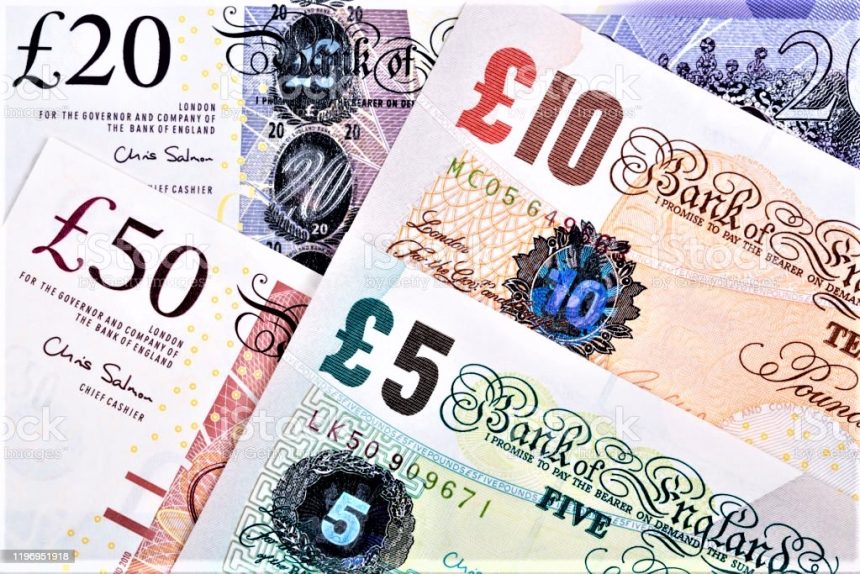Pound Strengthens Against US Dollar Ahead of US Nonfarm Payrolls Report.
The Pound Sterling (GBP) continues to gain momentum against the US Dollar (USD), reaching an almost four-month high near 1.2930 during the European trading session on Friday. The GBPUSD pair exhibited strength ahead of the much-anticipated United States Nonfarm Payrolls (NFP) report for February, scheduled to be release at 13:30 GMT.
This economic report is a key indicator of the US labor market’s health and plays a crucial role in shaping market expectations regarding the Federal Reserve’s (Fed) monetary policy outlook. Investors, analysts, and traders will be closely watching the data, as it could significantly impact forex markets, interest rate expectations, and global investment trends.
US Nonfarm Payrolls: Key Expectations and Market Impact
Economists forecast that the US economy added 160K new jobs in February, marking an improvement over the 143K recorded in January. The Unemployment Rate is expected to remain steady at 4%, reflecting a stable labor market.
Another critical component of the report is the US Average Hourly Earnings data, which serves as a key measure of wage growth. Analysts estimate that year-over-year wage growth has remained steady at 4.1%, while monthly wage growth is expected to slow down to 0.3%, compared to the 0.5% increase recorded in January.
If the labor market and wage growth data come in stronger than expected, it could reinforce the view that the Federal Reserve may keep interest rates in the current range of 4.25%-4.50% for an extended period. On the other hand, weaker data could increase expectations of an interest rate cut.
Market Expectations for Federal Reserve’s Interest Rate Policy
According to the CME FedWatch Tool, there is a near certainty that the Federal Reserve will leave borrowing costs unchanged at its March meeting. However, traders are currently pricing in a 50% probability of a rate cut in May, depending on economic conditions and inflation trends.
On Thursday, Atlanta Fed Bank President Raphael Bostic stated at an event hosted by the Birmingham Business Journal that interest rates should remain at current levels until late spring or early summer. He warned that US President Donald Trump’s economic policies, including tariffs, could add inflationary pressures, making it more challenging for the Fed to reduce rates in the near term.
Pound Sterling Gains Support from BoE’s Catherine Mann’s Hawkish Stance
The Pound Sterling (GBP) has been strengthening against major currencies, supported by comments from Bank of England (BoE) Monetary Policy Committee (MPC) member Catherine Mann. During a speech at a Reserve Bank of New Zealand (RBNZ) research conference, Mann strongly opposed a gradual and cautious approach to monetary policy easing.
Her remarks contrasted with the views of other BoE officials, who have recently signaled a more measured and steady pace of reducing monetary policy restrictiveness.
Key Takeaways from Catherine Mann’s Speech:
Mann disagrees with the gradual monetary easing favored by most BoE officials.
She believes the current high level of market volatility makes a slow approach ineffective.
Cross-border financial spillovers are adding significant uncertainty, further complicating monetary policy decisions.
On Wednesday, BoE Governor Andrew Bailey and other officials signaled that the bank would slowly remove monetary policy restrictiveness, citing persistent inflation risks. However, Mann’s position suggests that the BoE might need a more aggressive stance to tackle inflation and economic challenges.
US President Donald Trump’s Tariff Policy and Its Impact on the Economy
In a significant development, US President Donald Trump has exempted a number of products from tariffs under the United States-Mexico-Canada Agreement (USMCA) until April 2. This move is expected to provide temporary relief to industries that rely on imports from Canada and Mexico.
Trump’s tariff policies have been a source of debate, as they have the potential to disrupt supply chains, increase production costs, and fuel inflation. On Wednesday, he relaxed levies on automobiles imported from Canada and Mexico, following discussions with major US automakers.
While this temporary exemption offers some relief, analysts believe that Trump’s broader trade policies could introduce volatility in global markets, especially if reciprocal tariffs are imposed after April 2.
How Forex Markets Are Reacting to These Developments
The GBPUSD pair has been on an upward trend, reflecting strong sentiment around the Pound Sterling. Several factors are driving this movement:
1. Weaker US Dollar: With uncertainty over the Fed’s next move and concerns about economic growth, the USD has struggled to gain traction.
2. Hawkish BoE Comments: Catherine Mann’s opposition to gradual easing has strengthened market confidence in the British Pound.
3. US Labor Market Uncertainty: Traders are closely watching the NFP report, as any surprises could significantly shift market expectations regarding Fed policy.
If the US employment data disappoints, the US Dollar could weaken further, providing more upside for the GBPUSD pair. However, a strong NFP print could bolster the USD, potentially reversing some of GBP’s recent gains.
Technical Analysis: Pound(GBPUSD) Levels to Watch
From a technical analysis perspective, the GBPUSD pair is approaching a key resistance level at 1.2930. If the pair successfully breaks above this level, the next upside target could be 1.3000, a psychological resistance point.
On the downside, initial support is seen near 1.2850, followed by 1.2800. A break below these levels could indicate renew bearish pressure on the Pound Sterling.
Final Thoughts: Key Takeaways for Traders and Investors
The GBPUSD pair is trading near a four-month high ahead of the US Nonfarm Payrolls (NFP) report.
US labor market data will influence the Federal Reserve’s interest rate decisions, with stronger employment figures likely delaying rate cuts.
Bank of England’s Catherine Mann opposes gradual easing, suggesting that UK monetary policy may remain more restrictive than expected.
US President Donald Trump’s tariff exemptions offer temporary relief but could lead to inflationary pressures in the long term.
Technical levels indicate key resistance at 1.2930 and potential support at 1.2850 for GBPUSD.
With major economic data releases and geopolitical developments shaping market trends, traders and investors should stay vigilant and be prepare for increased volatility in the foreign exchange markets.









